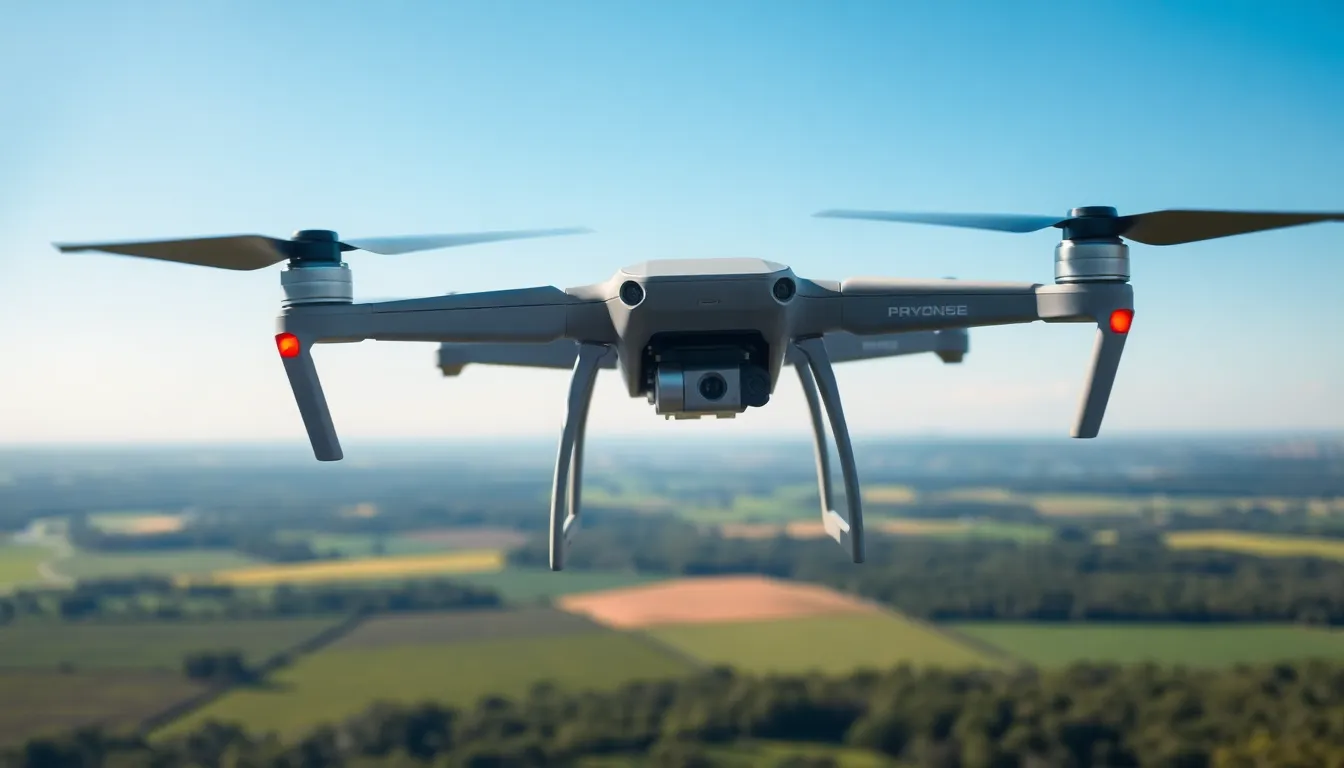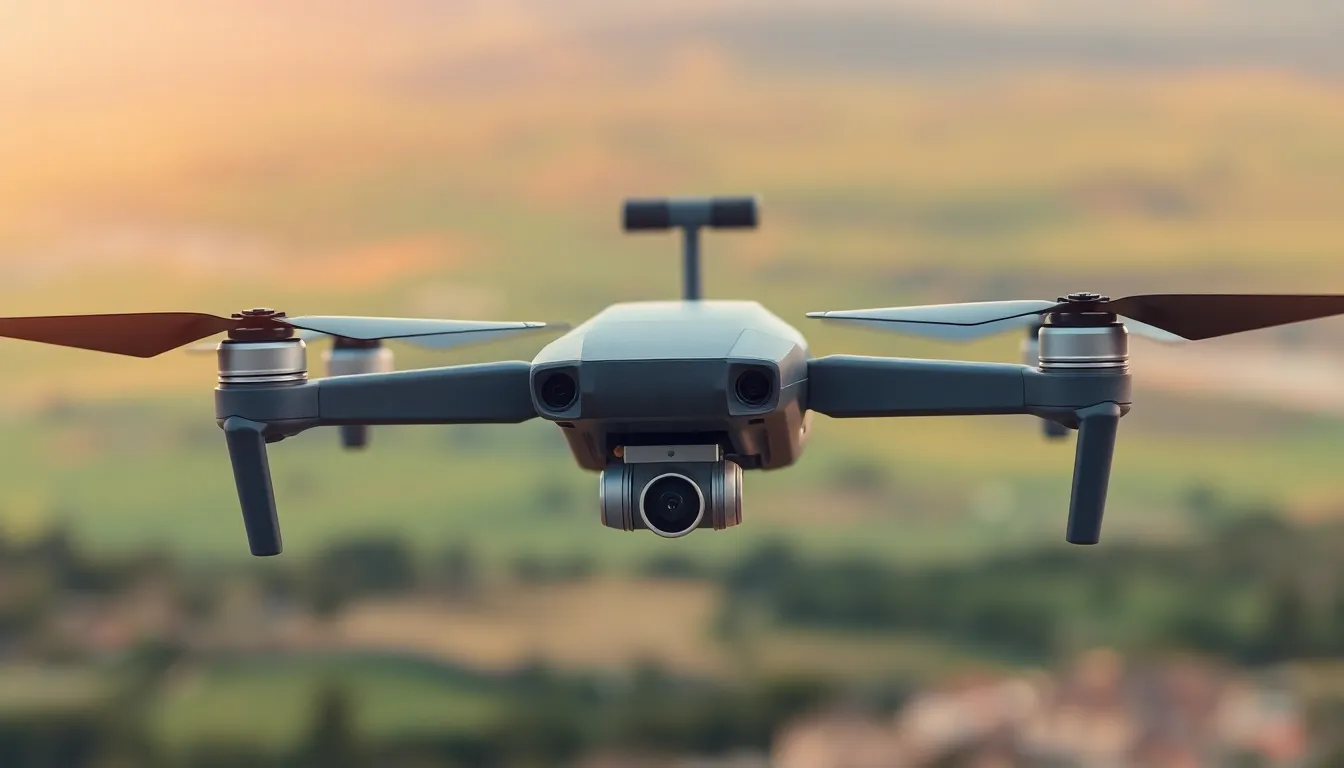In a world where drones are no longer just for photography or delivering snacks, drone coding platforms are taking flight. Imagine teaching a flying robot to do your bidding—all while sipping coffee and pretending to be a tech wizard. These platforms empower enthusiasts and professionals alike to unleash their creativity and harness the power of coding in the sky.
Whether you’re a seasoned programmer or just starting your coding journey, there’s a drone platform waiting to elevate your skills. From racing drones to agricultural helpers, the possibilities are as vast as the sky itself. So buckle up, because diving into the world of drone coding could turn you into the next aerial maestro. Get ready to code, fly, and maybe even impress your friends with your newfound skills—who knew coding could be this much fun?
Table of Contents
ToggleOverview of Drone Coding Platforms
Drone coding platforms enable users to program drones for various applications, extending far beyond traditional uses like photography and package delivery. These platforms support both seasoned developers and novices, fostering an environment for creativity and learning.
Many platforms offer user-friendly interfaces that make it easy to navigate coding processes. Options range from block-based programming to advanced coding languages, accommodating different skill sets. For instance, Scratch-like interfaces allow beginners to visualize programming concepts without needing extensive coding knowledge. Conversely, experienced programmers can utilize Python or C++ for more complex tasks.
Common applications of drone coding include agriculture, where farmers implement drones for crop monitoring and precision farming. Racing enthusiasts develop high-speed drones to compete in events, showcasing the versatility of drone coding platforms. Educational institutions also employ these platforms, encouraging students to grasp coding fundamentals through hands-on experiences.
Several notable drone coding platforms have emerged in recent years. Examples include:
- Tynker: Offers a block-based coding interface for kids, promoting creativity and problem-solving.
- DroneBlocks: Provides hands-on coding experiences for educational purposes, enabling users to program drones through an easy-to-use app.
- ArduPilot: Serves as an open-source autopilot platform, giving advanced users the ability to customize drone functionalities.
Utilizing these platforms opens doors to innovative projects and practical applications in various fields. Enthusiasts can explore new horizons in technology through drone coding, making it a highly engaging and rewarding endeavor.
Key Features to Consider

Choosing the right drone coding platform involves several key features that enhance user experience and coding efficiency. Understanding these features provides insight into making informed decisions.
User Interface and Experience
User interface design greatly influences coding efficiency. A clean, intuitive layout streamlines navigation and reduces learning time for beginners. It’s essential for platforms to offer drag-and-drop coding where users can visualize their programs. Engaging tutorials further enhance the experience, allowing users to learn while coding. Feedback mechanisms, like real-time error checking, aid in troubleshooting and provide support during development.
Supported Programming Languages
Supported programming languages play a vital role in determining a platform’s versatility. Some platforms favor block-based languages, perfect for beginners, while others incorporate advanced languages such as Python and C++. Compatibility with various coding levels allows users to progress at their own pace and encourages skill development. This range of programming options caters to a broad audience, accommodating casual users and experienced developers alike.
Compatibility with Various Drones
Compatibility with various drones ensures a platform’s relevance in the market. Users benefit from platforms that support popular drone models while offering options for customization and modification. Check for the availability of integration with both commercial and DIY drones. This flexibility allows users to experiment with different drone types, enhancing their learning outcomes and facilitating a diverse range of applications.
Popular Drone Coding Platforms
Several drone coding platforms engage users with various programming levels, making learning accessible and enjoyable. The following overviews highlight notable options in this space.
Tynker Overview
Tynker offers a user-friendly, block-based coding environment ideal for beginners. This platform provides interactive lessons that guide users through the basics of drone programming. With features like game design and storytelling, Tynker fosters creativity while teaching valuable coding skills. Compatible with several drone models, it allows users to deploy their creations in real-world flying scenarios. Educational resources ensure that both educators and students can use Tynker effectively, maximizing learning outcomes and engagement.
DroneBlocks Overview
DroneBlocks stands out for its focus on easy programming and intuitive interfaces. It caters to a wide range of users, from novices to those with more experience. This platform allows users to program drones using a drag-and-drop block coding approach, simplifying complex concepts. DroneBlocks supports various drones, enhancing versatility for users interested in hands-on project applications. Tutorials and challenges provide structured learning paths that encourage experimentation, helping users grasp drone technology effectively.
ArduPilot Overview
ArduPilot serves as a versatile, open-source platform suitable for advanced users. This platform supports Python and C++, accommodating diverse programming skills and preferences. Its robust framework enables users to modify drone behavior extensively, making it ideal for enthusiasts interested in customization. Compatibility with numerous drone models ensures that users can easily apply their programming knowledge across different types. Additionally, an active community supports ArduPilot, providing shared knowledge and resources for ongoing learning and project development.
Advantages of Using Drone Coding Platforms
Drone coding platforms offer numerous benefits for users eager to explore programming and drone technology. These platforms foster creativity through customizable programming opportunities. Beginners gain access to user-friendly environments, facilitating easy learning and engagement with coding concepts.
Advanced users enjoy the flexibility to implement complex algorithms. They can customize flight patterns and modify drone behaviors, enhancing their skills. Educational applications facilitate STEM learning, making these platforms ideal for classrooms. Engaging tutorials and interactive lessons help solidify fundamental coding knowledge.
Support for various programming languages expands accessibility. Users can choose between block-based coding for ease or dive into more advanced languages like Python and C++. Many platforms integrate gamified elements, providing a fun way to learn while completing challenges or projects.
Compatibility with various drone models allows users to experiment with different technologies. This diversity enhances hands-on experience. Community support often fosters collaboration; users can share tips and projects, enhancing the learning environment.
Incorporation of real-world applications strengthens coding comprehension. Drones utilized in agriculture or search-and-rescue highlight the practical uses of coding skills. Platforms often feature project ideas that inspire users to create their unique solutions, further enhancing engagement.
Ultimately, drone coding platforms cultivate a rich ecosystem for skill development and innovation. Enthusiasts find joy in programming drones, transforming passive users into active creators and problem solvers.
Limitations and Challenges
Drone coding platforms face several limitations and challenges that users should consider. One major issue involves complex coding requirements. While platforms like Tynker and DroneBlocks simplify the process for beginners, more advanced users may encounter steep learning curves on platforms like ArduPilot. Diverse programming languages add another layer of difficulty. Beginners might struggle to transition from block-based coding to advanced languages like Python and C++.
Compatibility issues can arise with various drone models. Users may discover that certain platforms do not support every drone, limiting experimentation and learning opportunities. Real-time feedback from drones poses challenges as well. Users often find that troubleshooting coding errors requires knowledge beyond basic programming skills, affecting overall learning experiences.
Another consideration involves resource availability. Platforms may lack comprehensive tutorials or community support, which hinders user engagement and progress. While some platforms offer extensive documentation, others might not, leaving users without essential guidance. Additionally, internet connectivity issues can disrupt access to cloud-based features, impacting usability.
Security concerns present another challenge in drone coding. Users should be aware of potential vulnerabilities in open-source platforms, which can compromise data privacy and drone safety. These risks necessitate that individuals prioritize security when selecting coding platforms.
Finally, the rapidly evolving technology landscape warrants ongoing learning. As drone technology advances, users need to adapt their skills and knowledge continuously. Lifelong learning becomes essential for those wanting to stay ahead in this field. Engaging with the latest developments keeps users informed and enhances their coding experience.
Engaging with drone coding platforms opens up a world of possibilities for creativity and skill development. These platforms empower users to explore various applications of drones while enhancing their programming abilities. Whether someone is a beginner looking to learn the basics or an advanced user seeking to implement complex algorithms, there’s a suitable platform available.
The right choice in a coding platform can significantly impact the learning experience. By considering factors like user interface, programming language support, and compatibility with different drone models, users can maximize their potential. As technology continues to evolve, staying informed and adapting to new advancements will ensure that users remain at the forefront of drone innovation. With the right tools and mindset, anyone can transform their ideas into reality through drone coding.





